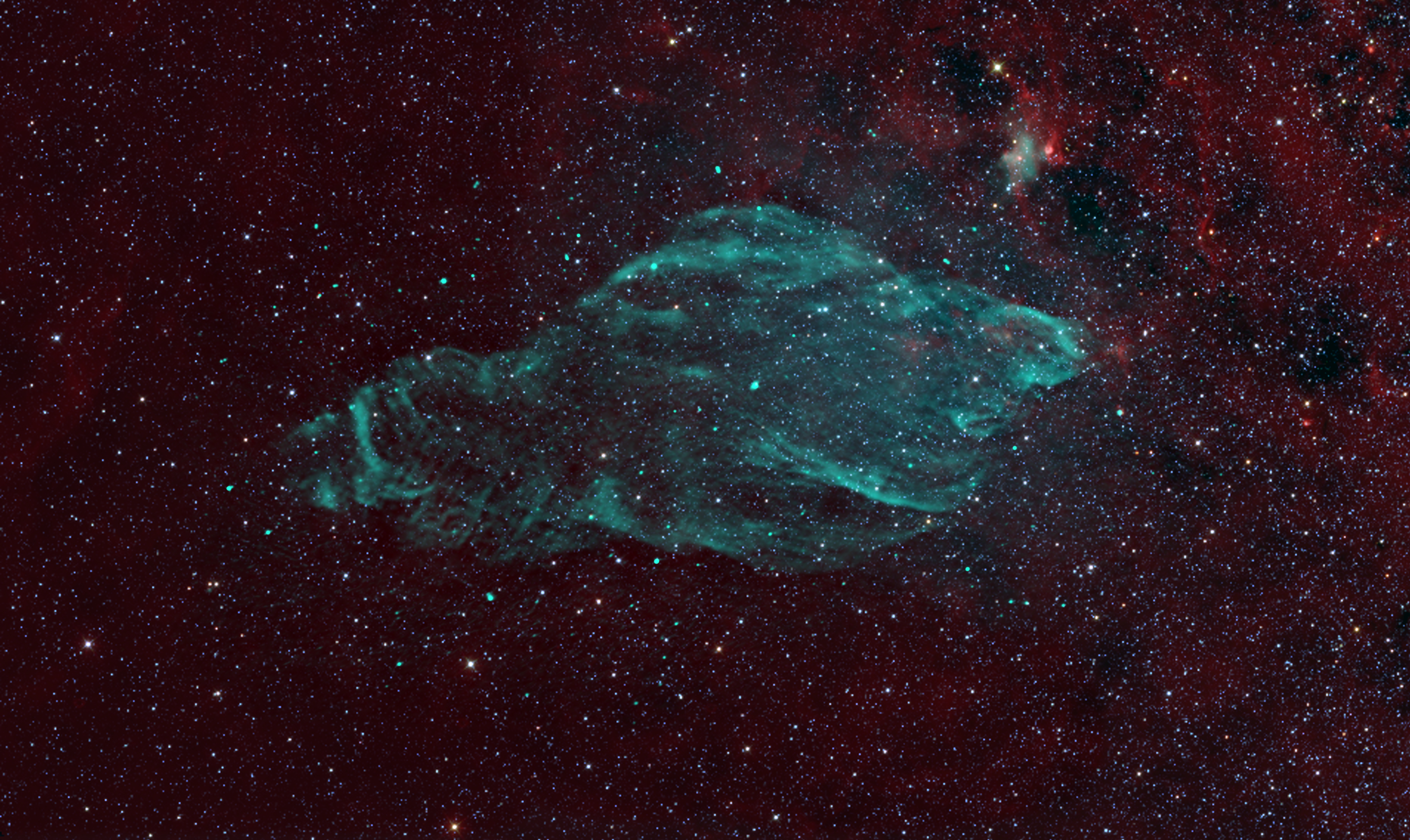|
W50 (nebula)
Westerhout 50 (W50) or SNR G039.7-02.0, also referred to as the Manatee Nebula, is a supernova remnant located in the constellation Aquila, about 18,000 light years away. In its centre lies the micro-quasar SS 433, whose jets are distorting the remnant's shell. Most likely W50 and SS 433 are related objects, remnants from a supernova A supernova is a powerful and luminous explosion of a star. It has the plural form supernovae or supernovas, and is abbreviated SN or SNe. This transient astronomical event occurs during the last evolutionary stages of a massive star or when ... which occurred about 20,000 years ago. Notes Book sources * External links "The Mystery of SS433"Radio image (NRAO)X-ray image (ROSAT)Cosmic manatee accelerates particles from head (ESA) Supernova remnants Aquila (constellation) {{nebula-stub ... [...More Info...] [...Related Items...] OR: [Wikipedia] [Google] [Baidu] |
W50 Medium
W5, W-5 or W.5 may refer to: Arts, entertainment and media * ''W5'' (TV program), a Canadian television news program * ''Nick News W/5'', the original title of ''Nick News'', an educational TV show Science and technology * W5 (nuclear warhead) of the Mark 5 nuclear bomb * W5 clock, built by Philip Woodward * W5, a Motorola Rokr mobile phone * W5, a radio source in the Westerhout 5 nebula * W5, in the classification of meteorite weathering * DSC-W5, a Sony Cyber-shot camera * Eutelsat W5, a telecommunications satellite Transportation and military * Albatros W.5, a World War I German floatplane torpedo bomber * Cierva W.5, a British helicopter from 1938 * Wittman W-5 Buttercup, a 1938 aircraft * London bus route W5 * Roewe W5, a Chinese car * W5 series of road signs in the United States * W5, a station of the Hiroden Hakushima Line in Hiroshima, Japan * W5, IATA airline code for Mahan Air * W5 tram, a class of electric trams built by the Melbourne & Metropolitan Tramways ... [...More Info...] [...Related Items...] OR: [Wikipedia] [Google] [Baidu] |
J2000
In astronomy, an epoch or reference epoch is a instant, moment in time used as a reference point for some time-varying astronomical quantity. It is useful for the celestial coordinates or orbital elements of a Astronomical object, celestial body, as they are subject to Perturbation (astronomy), perturbations and vary with time. These time-varying astronomical quantities might include, for example, the mean longitude or mean anomaly of a body, the node of its orbit relative to a reference plane, the direction of the apogee or Perihelion and aphelion, aphelion of its orbit, or the size of the major axis of its orbit. The main use of astronomical quantities specified in this way is to calculate other relevant parameters of motion, in order to predict future positions and velocities. The applied tools of the disciplines of celestial mechanics or its subfield orbital mechanics (for predicting orbital paths and positions for bodies in motion under the gravitational effects of other bodi ... [...More Info...] [...Related Items...] OR: [Wikipedia] [Google] [Baidu] |
Aquila (constellation)
Aquila is a constellation on the celestial equator. Its name is Latin for 'eagle' and it represents the bird that carried Zeus/Jupiter's thunderbolts in Greek-Roman mythology. Its brightest star, Altair, is one vertex of the Summer Triangle asterism. The constellation is best seen in the northern summer, as it is located along the Milky Way. Because of this location, many clusters and nebulae are found within its borders, but they are dim and galaxies are few. History Aquila was one of the 48 constellations described by the second-century astronomer Ptolemy. It had been earlier mentioned by Eudoxus in the fourth century BC and Aratus in the third century BC. It is now one of the 88 constellations defined by the International Astronomical Union. The constellation was also known as ''Vultur volans'' (the flying vulture) to the Romans, not to be confused with ''Vultur cadens'' which was their name for Lyra. It is often held to represent the eagle which held Zeus's/Jupiter's t ... [...More Info...] [...Related Items...] OR: [Wikipedia] [Google] [Baidu] |
Light Year
A light-year, alternatively spelled light year, is a large unit of length used to express astronomical distances and is equivalent to about 9.46 trillion kilometers (), or 5.88 trillion miles ().One trillion here is taken to be 1012 (one million million, or billion in long scale). As defined by the International Astronomical Union (IAU), a light-year is the distance that light travels in a vacuum in one Julian year (365.25 days). Because it includes the time-measurement word "year", the term ''light-year'' is sometimes misinterpreted as a unit of time. The ''light-year'' is most often used when expressing distances to stars and other distances on a galactic scale, especially in non-specialist contexts and popular science publications. The unit most commonly used in professional astronomy is the parsec (symbol: pc, about 3.26 light-years) which derives from astrometry; it is the distance at which one astronomical unit subtends an angle of one second of arc. Defini ... [...More Info...] [...Related Items...] OR: [Wikipedia] [Google] [Baidu] |
SS 433
SS 433 is one of the most exotic star systems observed. It is located in the Milky Way galaxy, and is an eclipsing X-ray binary system, with the primary being a stellar-mass black hole. The spectrum of the secondary companion star suggests that it is a late A-type star. SS 433 is the first discovered microquasar. It is at the centre of the supernova remnant W50. SS 433's designation comes from the initials of two astronomers at Case Western Reserve University: Nicholas Sanduleak and Charles Bruce Stephenson. It was the 433rd entry in their 1977 catalog of stars with strong emission lines.SS 433 David Darling, entry in ''The Internet Encyclopedia of Science'', accessed on line September 14, 2007. Its emission lines were studied by |
Supernova Remnant
A supernova remnant (SNR) is the structure resulting from the explosion of a star in a supernova. The supernova remnant is bounded by an expanding shock wave, and consists of ejected material expanding from the explosion, and the interstellar material it sweeps up and shocks along the way. There are two common routes to a supernova: either a massive star may run out of fuel, ceasing to generate fusion energy in its core, and collapsing inward under the force of its own gravity to form a neutron star or a black hole; or a white dwarf star may accrete material from a companion star until it reaches a critical mass and undergoes a thermonuclear explosion. In either case, the resulting supernova explosion expels much or all of the stellar material with velocities as much as 10% the speed of light (or approximately 30,000 km/s). These speeds are highly supersonic, so a strong shock wave forms ahead of the ejecta. That heats the upstream plasma up to temperatures well above mi ... [...More Info...] [...Related Items...] OR: [Wikipedia] [Google] [Baidu] |
Micro-quasar
X-ray binaries are a class of binary stars that are luminous in X-rays. The X-rays are produced by matter falling from one component, called the ''donor'' (usually a relatively normal star), to the other component, called the ''accretor'', which is very compact: a neutron star or black hole. The infalling matter releases gravitational potential energy, up to several tenths of its rest mass, as X-rays. (Hydrogen fusion releases only about 0.7 percent of rest mass.) The lifetime and the mass-transfer rate in an X-ray binary depends on the evolutionary status of the donor star, the mass ratio between the stellar components, and their orbital separation. An estimated 1041 positrons escape per second from a typical low-mass X-ray binary. Classification X-ray binaries are further subdivided into several (sometimes overlapping) subclasses, that perhaps reflect the underlying physics better. Note that the classification by mass (high, intermediate, low) refers to the optically vis ... [...More Info...] [...Related Items...] OR: [Wikipedia] [Google] [Baidu] |
Supernova
A supernova is a powerful and luminous explosion of a star. It has the plural form supernovae or supernovas, and is abbreviated SN or SNe. This transient astronomical event occurs during the last evolutionary stages of a massive star or when a white dwarf is triggered into runaway nuclear fusion. The original object, called the ''progenitor'', either collapses to a neutron star or black hole, or is completely destroyed. The peak optical luminosity of a supernova can be comparable to that of an entire galaxy before fading over several weeks or months. Supernovae are more energetic than novae. In Latin language, Latin, ''nova'' means "new", referring astronomically to what appears to be a temporary new bright star. Adding the prefix "super-" distinguishes supernovae from ordinary novae, which are far less luminous. The word ''supernova'' was coined by Walter Baade and Fritz Zwicky in 1929. The last supernova to be directly observed in the Milky Way was Kepler's Supernova in 160 ... [...More Info...] [...Related Items...] OR: [Wikipedia] [Google] [Baidu] |
National Radio Astronomy Observatory
The National Radio Astronomy Observatory (NRAO) is a federally funded research and development center of the United States National Science Foundation operated under cooperative agreement by Associated Universities, Inc. for the purpose of radio astronomy. NRAO designs, builds, and operates its own high-sensitivity radio telescopes for use by scientists around the world. Locations Charlottesville, Virginia The NRAO headquarters is located on the campus of the University of Virginia in Charlottesville, Virginia. The North American ALMA Science Center and the NRAO Technology Center and Central Development Laboratory are also in Charlottesville. Green Bank, West Virginia NRAO was, until October 2016, the operator of the world's largest fully steerable radio telescope, the Robert C. Byrd Green Bank Telescope, which stands near Green Bank, West Virginia. The observatory contains several other telescopes, among them the telescope that utilizes an equatorial mount uncommon for radio te ... [...More Info...] [...Related Items...] OR: [Wikipedia] [Google] [Baidu] |
Supernova Remnants
A supernova remnant (SNR) is the structure resulting from the explosion of a star in a supernova. The supernova remnant is bounded by an expanding shock wave, and consists of ejected material expanding from the explosion, and the interstellar material it sweeps up and shocks along the way. There are two common routes to a supernova: either a massive star may run out of fuel, ceasing to generate fusion energy in its core, and collapsing inward under the force of its own gravity to form a neutron star or a black hole; or a white dwarf star may accrete material from a companion star until it reaches a critical mass and undergoes a thermonuclear explosion. In either case, the resulting supernova explosion expels much or all of the stellar material with velocities as much as 10% the speed of light (or approximately 30,000 km/s). These speeds are highly supersonic, so a strong shock wave forms ahead of the ejecta. That heats the upstream plasma up to temperatures well above milli ... [...More Info...] [...Related Items...] OR: [Wikipedia] [Google] [Baidu] |






